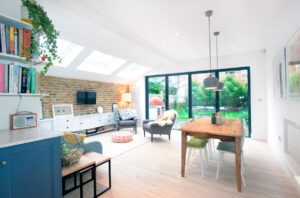In the world of architecture, it’s often the small spaces that offer the most room for creative transformation. While larger extensions grab the spotlight, it’s the modest ones that invite ingenuity and resourcefulness. If you’re looking to maximise your living area or add functional space without compromising your garden, with our expertise, we will help you navigate the world of small extensions.
With limited square footage, small spaces may seem restrictive, but in reality, they can offer a canvas for ground-breaking design concepts. In this article, we’ll unlock the secrets of designing multi-functional spaces, seamlessly connecting indoor and outdoor spaces, optimising natural light, and achieving architectural finesse on a budget.
We believe small extensions are not just about maximising space; they’re about maximising your lifestyle. From initial plans to finishing touches, our insights and inspiration will help you turn your extension dreams into a remarkable reality.
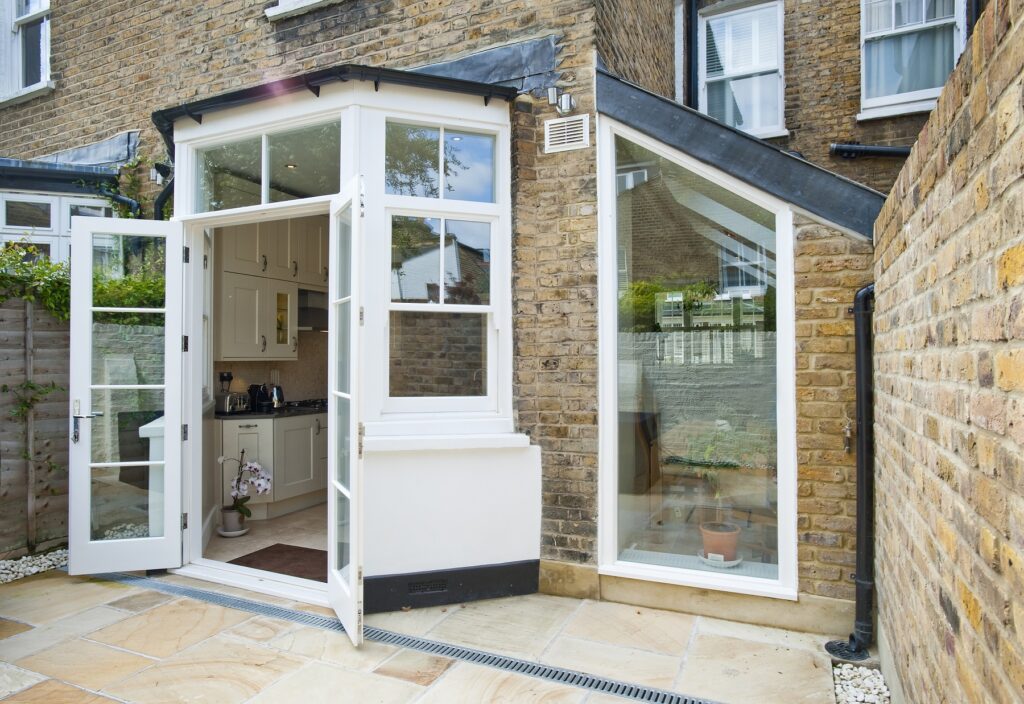
Planning for Success: Making the Most of Limited Space
Planning is the cornerstone of any successful extension project. When working with limited space, every inch of square footage matters so you can create an extension that maximises functionality whilst still making a significant impact to your space.
Before you even think about architectural designs or materials, take the time to define your vision for the space. Consider what the primary purpose of your extension will be. Are you yearning for a functional home office, or an open plan kitchen and dining room? Be clear about your vision.
With limited space, it’s imperative to optimise every nook and cranny. Plan the layout with the utmost efficiency. Consider the flow of movement within the space, and make sure there’s no wasted space. Wall-mounted furniture and storage solutions can be a game-changer in small extensions, freeing up valuable floor space.
Small extensions often lack the grandeur of large windows and spacious interiors. However, you can make up for it by strategically placing windows or incorporating a skylight. This will introduce natural light and create a sense of openness and connection to the outdoors.
Integrating with the existing home and creating harmony with the structure is essential. Your extension should seamlessly blend with the architectural style and materials of your home, creating a cohesive and visually appealing design.
While planning, keep your budget in mind. Small extensions can be cost-effective, but it’s crucial to stay within your financial boundaries. Be realistic about what you can afford and explore cost-effective building materials and design choices.
By planning meticulously and considering every detail, you can turn your extension into a space that not only meets your needs but also makes a significant impact on your home’s overall functionality and aesthetics. So, before you break ground, spend ample time in the planning phase.
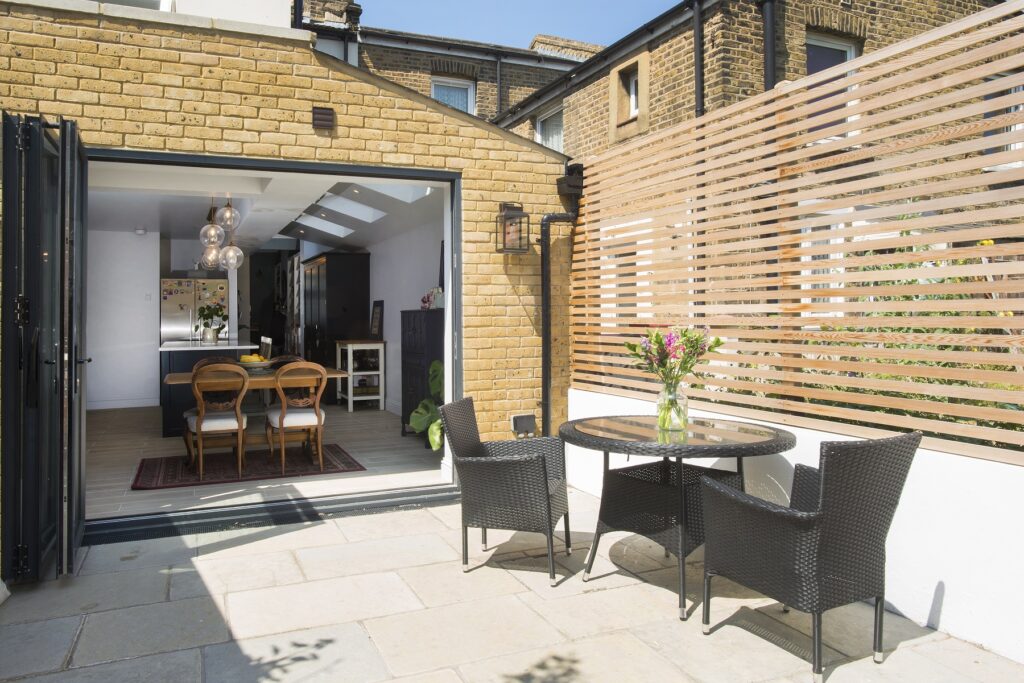
Smart Space Utilisation: Multi-Functional Extension Design
The concept of multi-functional design is a game-changer when it comes to small extensions. It’s all about creating spaces that are not just attractive but also highly versatile and practical. Every element within your extension serves more than one purpose, ensuring that you make the most of your limited space.
One of the first steps in creating a multi-functional space is to carefully select furniture that can adapt to various needs. Think about pieces that can easily transform or serve dual purposes. Tables are often at the heart of activities in a home. To optimise your small extension, choose tables that can be adapted for different uses. A dining table that can double as a desk is an excellent choice.
Maximising space doesn’t just apply to visible areas; it also extends to storage. Look for innovative storage solutions, such as built-in drawers under seating, or cabinets that blend seamlessly with the design.
If your small extension serves multiple purposes, consider using room dividers that can be folded or moved to create distinct zones. These dividers can provide privacy when needed and an open feel when not in use.
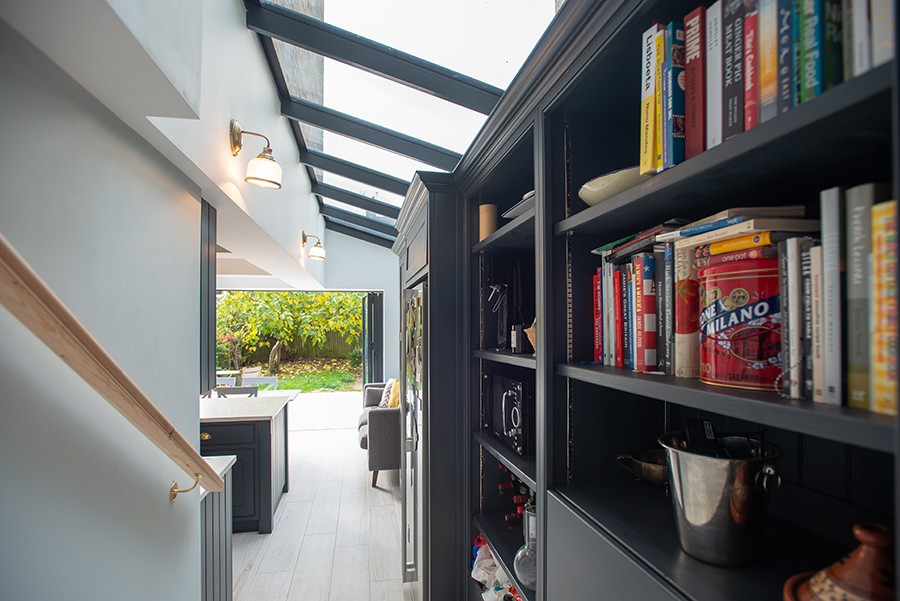
Light and Airy: Maximising Natural Light in Compact Extensions
Incorporating ample natural light into your extension is not only essential for creating an inviting and open atmosphere but also for making the most of your limited space. Small extensions often face the challenge of limited light, but with thoughtful design choices, you can overcome this obstacle and create a bright and airy environment.
One of the most effective ways to infuse your extension with natural light is through strategically placed windows. Consider the orientation of your extension and the path of the sun throughout the day. This will help you determine where to position windows to capture the most sunlight.
Skylights are a fantastic addition to small extensions. These roof-based windows not only maximise natural light but also create an open and expansive feeling within the space. An open layout with fewer walls and obstructions can also help light travel more freely within your extension. This approach maximises natural light and enhances the sense of space.
Integrating reflective materials into your extension’s design can significantly enhance the distribution of natural light. Mirrors, glass, and shiny surfaces bounce light around the room, making it appear larger and brighter. Choosing a light colour palette for your walls, ceilings, and furnishings can contribute to a brighter ambiance. Light colours, such as whites, pale greys, and pastels, reflect light more effectively than darker shades.
To ensure you’re not obstructing the incoming light, opt for minimalist window treatments. Sheer curtains, blinds, or even no window coverings can allow natural light to flow freely into your small extension. By thoughtfully incorporating elements, such as strategic window placement, skylights, reflective surfaces, a light colour palette, minimalist window treatments, and open layouts, your extension can become a bright and airy space that defies its compact size.

Architectural Finesse: Modern and Traditional Styles for Small Extensions
The architectural style you choose for your extension is a defining element that can significantly impact the overall look and feel of your home. One approach to architectural style is to complement the existing design of your home. This choice involves harmonising your extension with the predominant architectural elements, materials, and aesthetics of the original structure.
On the other hand, you can opt for a modern, contemporary architectural style to create a stunning contrast with your original home. This approach allows your extension to stand out and become a focal point, making a bold statement.
A blend of architectural styles, when executed with finesse, can result in a unique and eclectic charm. It’s an opportunity to combine the best of both worlds and create a design that’s both visually interesting and cohesive.
Regardless of the architectural style you choose, the materials you use are crucial in achieving architectural finesse. Whether it’s brick, glass, wood, or metal, selecting materials that complement or contrast effectively can elevate the design.
To ensure a seamless blend between the original structure and the extension, maintain a consistent colour palette. This keeps the overall look cohesive and visually appealing. Architectural finesse in small extensions is about making informed and thoughtful choices that suit your preferences and harmonise with the existing structure, or intentionally create contrast for a striking effect.
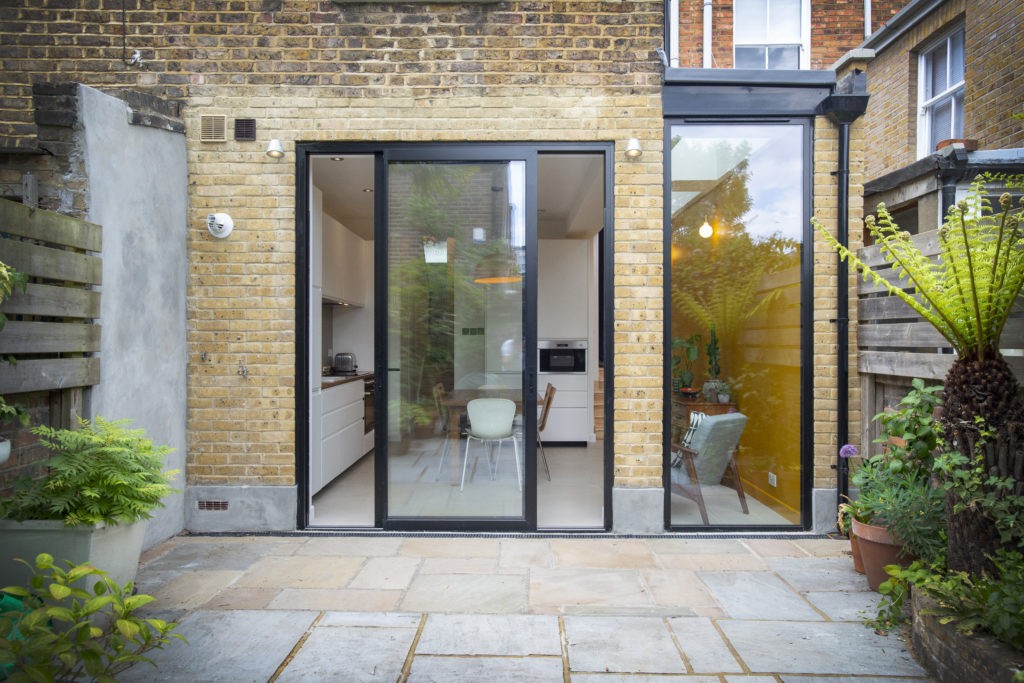
Budget-Friendly Brilliance: Cost-Effective Ideas for Small House Extensions
Budget-friendly brilliance is about realising your extension dreams without draining your bank account. While extensions can be expensive, there are strategic and creative approaches that allow you to achieve a stunning space without breaking the budget.
Before you start any construction, establish clear project goals. Determine the primary purpose of your extension and the specific features you need. A well-defined plan helps you avoid unnecessary expenses and stay on track.
Create a detailed budget that accounts for every aspect of your extension, including materials, labour, permits, and finishing touches. Having a comprehensive budget ensures you won’t be caught off guard by unexpected costs.
Choosing cost-effective yet durable materials is essential. Look for affordable alternatives that still provide quality and aesthetics. For instance, engineered wood flooring can be a more budget-friendly option than solid hardwood. When purchasing materials and furnishings, look for discounts, sales, and clearance items. Shopping strategically can help you find quality products at a fraction of the cost.
If you have the skills and time, consider tackling some aspects of the project yourself. Painting, minor landscaping, or even assembling furniture can be DIY tasks that save on labour costs. Pre-fabricated components, like kitchen cabinets, can save you money and time. These components are typically less expensive than custom-built ones and can be a cost-effective solution for your extension.
Consider repurposing or upcycling existing furniture and materials from your home or local second-hand shops. With a bit of creativity, you can give new life to old items. Auctions can be an excellent source for discounted building materials, fixtures, and decor items. Many people find unique and budget-friendly items at auctions.
Don’t settle for the first contractor or supplier you find. Get multiple quotes to compare prices and services. This can help you negotiate better deals and ensure you get the best value for your money.


